Sony RX0 II
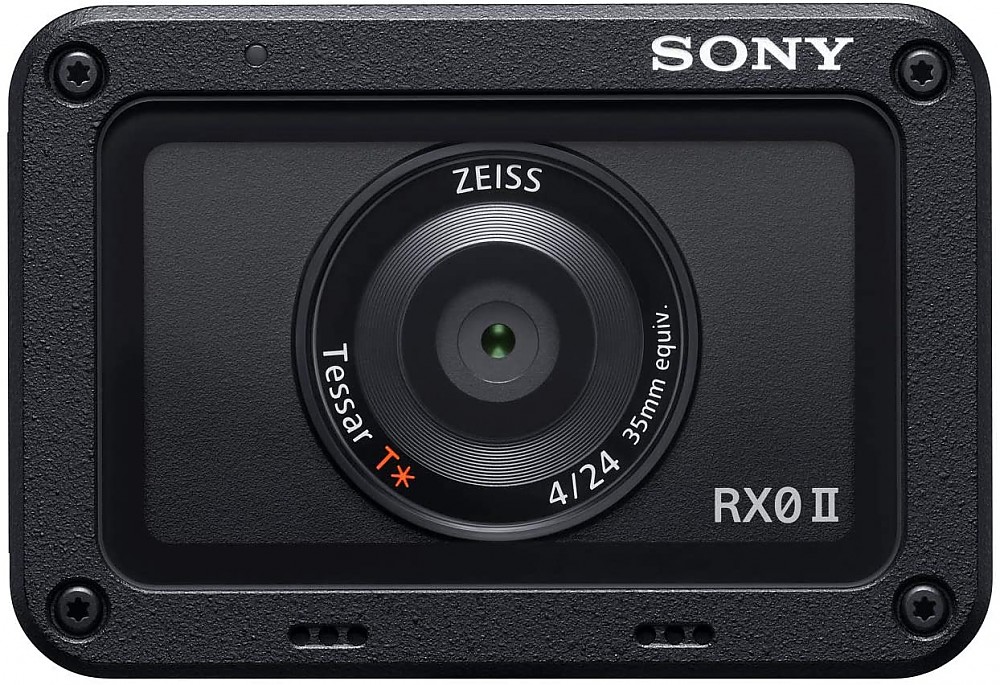
This is a rare example of a super-rugged camera with excellent stills image quality. Unlike most waterproof cameras, which usually fall short of “real” cameras in terms of photos quality, the Sony RX0II is a completely different story, as it’s entirely capable of taking great photos, being nearly indestructible at the same time.
Pros
- Super compact and lightweight for “real” camera (which it is, with some caveats)
- Waterproof (10m) and shockproof (2m) metal body, user-replaceable lens protector glass
- Great dynamic range, colors and noise in good light conditions
- Great sharpness, good resolution for such a camera
- 24 mm equivalent lens delivers photographic-looking landscapes
- Shoots RAW and even RAW+JPEG at ~3 FPS
- Tilt-flip screen
- Great video quality (technically), almost no rolling shutter, great audio quality
- Familiar Sony Alpha user interface for already established users (though I could benefit from more customizable buttons)
- Lots of photographic features; microphone and HDMI ports
Cons
- Very slow lens (F12 equivalent aperture — fixed)
- No phase detection auto-focus (PDAF) and AF tracking, which may affect your video shooting experience
- No optical stabilizer (OSS), although electronic stabilization is available for videos
- Low light photos look quite miserably — a smartphone camera will be no worse
- The battery lasts for some 40 minutes of video shooting
- No touch screen
- The menus borrowed from “big” Sony cameras may be extremely cumbersome for newcomers
- No lens cap or case bundled with camera
- Rather expensive for such a specialist camera
Background

I’m an avid photo enthusiast, and it’s not unusual for me to carry some 3 kg (6 lbs) of camera gear on a wilderness cycling trip. After I became interested in packrafting, I realized that my current photo gear is not as relevant as in cycling and hiking trips. Unlike hiking and cycling, on the river I cannot stop and keep my boat immobile to shoot something! Also it’s impossible to [safely] store a “big” camera conveniently on hand and access it instantly in case of need. Even having a decent waterproof bag for the camera, most photos still appear to be taken from the shore — that’s really boring! Shooting stills with a smartphone (from waterproof sleeve), or my Yi 4K action camera, delivered too bad results to be considered as a serious substitute for a “real” camera, plus, a smartphone in the pocket of PFD is quite difficult to reach quickly.
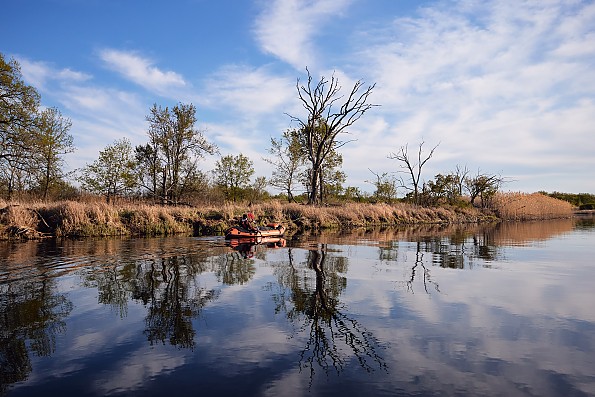
Then I purchased the Sony DSC-RX0II — conveniently, I own two Sony cameras already, and RX0II has integrated nicely into my “photo production” pipeline using the Capture One for Sony, which is a very capable RAW processing software.

Some quick specs for your convenience:
-
Max resolution: 4800 x 3200 (15 megapixels)
-
Sensor size: a bit less than 1″ (3x crop factor)
-
Image formats: RAW, JPEG, RAW+JPEG
-
Lens: 24 mm focal length (equiv.), F4 fixed aperture, no stabilization, 20 cm close focus, contrast detection AF (CDAF)
-
Articulated tilting 1.5″ LCD (no touch)
-
Drive: single, 3 to 16 fps continuous, self-timer 2/5/10 sec.
-
Video formats: 4K/30p, FullHD up to 120p
-
Storage type: microSD, Memory Stick Micro
-
Battery: replaceable 700 mAh, in-camera charging, 240 shots CIPA
-
Weight (inc. batteries): 132 g (0.29 lb / 4.66 oz)
-
Dimensions: 59 x 41 x 35 mm (2.32 x 1.61 x 1.38″)
-
Connectivity: Wi-Fi, Bluetooth, mic port, HDMI port
Overall appearance
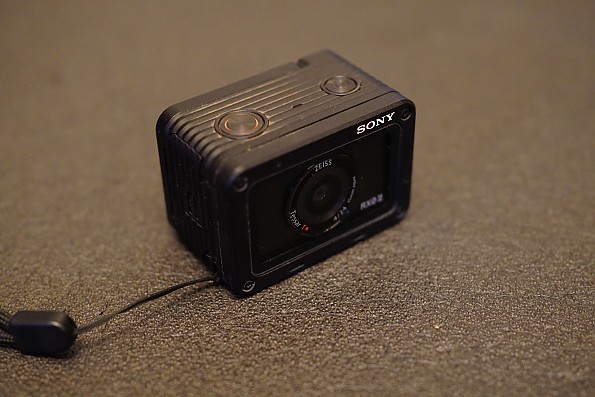
The camera body is about as big as two stacked matchboxes, weighs 132 g, made of metal, it’s crazy waterproof (10 meters) and shockproof (2 meters). The front protector glass is user-replaceable (though not cheap, so you’d better purchase a proper case ASAP). On the water, I mount this camera in the middle of my paddle shaft, using the cycling bar mount and the GoPro-¼” adapter. That makes it possible to control the camera easily, although it’s almost impossible to shoot movies while paddling. For movies on the go, I’ll be mounting the camera on my head or helmet via the ¼” adapter and proper GoPro-style mount.
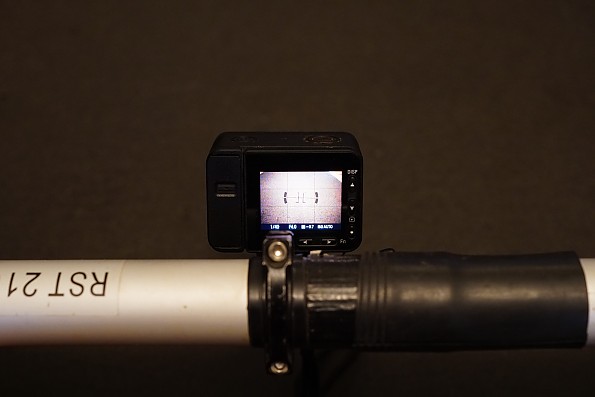
The camera is turned on with a brief button press—almost instantly. Another button press berforms CDAF sequence and takes a photo, so I can resume paddling with just a brief pause (several seconds). Therefore, on the water, I can shoot stills as frequently as I like. After an 8-day river trip I brought home some 2200 RAW photos, about 1600 of them were taken on RX0II while paddling. (Of that, I published 90 photos.)
Image quality
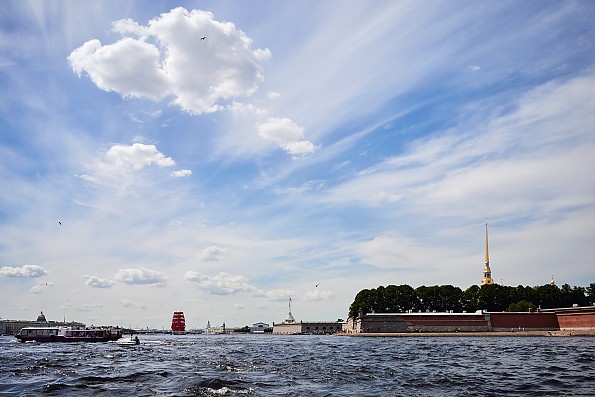
The stills quality is really as good as it gets for such a rugged and waterproof camera. Its 1-inch sensor (slightly cropped from 20 to 15 MP—with resulting 3x crop factor) delivers good dynamic range and colors in daylight. The resolution is good too, though not really outstanding at 15 MP, but sharpness is excellent nevertheless. I always shoot RAW, and in good light conditions the images from RX0II are as good looking and joyful to process as those from Sony A6500, which is at least 5 times heavier and not waterproof. Some shots taken with RX0II do deserve to be printed and hung on the wall.

But the low light capabilities of the camera are limited due to very slow F4 lens, and in low light the images look like those shot on a smartphone (i.e. they are okay, but really far from flawless, and don’t ever think of shooting above ISO 3200). Lack of OSS and super lightweight body make me never go under 1/125 shutter speed, which affects the low light capabilities even more.
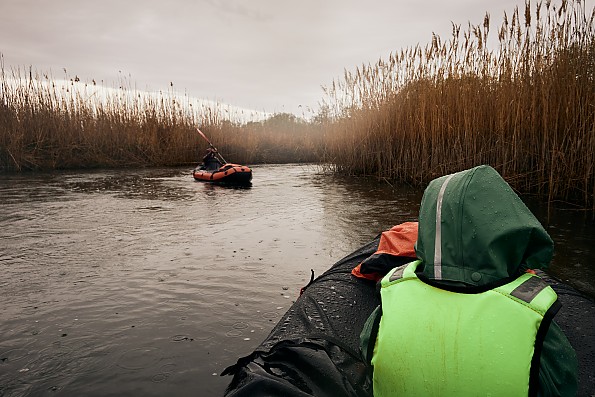
That said, the stills capabilities on this camera are heavily leaned towards shooting under daylight, where it really shines in comparison to smartphones and action cameras with those 1/2.3 sensors. Conveniently, that’s exactly my situation on various outdoor trips.
Video shooting
There is my video and slides from Petrovsky Rowing Marathon, shot on RX0II (mostly).
I’m not a video expert, but I can say that in the video department the RX0II delivers good results with very decent audio quality for such a camera. Although the recent top-of-the-line GoPros will be even more capable with advanced codecs, super-effective stabilization and ability to capture videos at crazy resolutions and frame rates.
In Sony, you are limited to 4K/30p or FHD/120p at best, which is good, but not exceptional in any manner. Remember: Sony RX0II is not a substitute for a regular action camera due to quite narrow field of view. Electronic stabilization is present, it works fine, although not as good as in recent GoPros. The rolling shutter effect is negligible.
For the average video shooter there’s just a single flaw: the camera doesn’t have continuous AF and phase detection AF, like most serious cameras and recent smartphones do. There are several options intended to help you with that: a) refocus on demand while shooting, b) lock focus on hyperfocal distance (like in GoPro), c) switch to special mode for close-up shooting.
Usually I prefer the first option—remember that the depth of field (DOF) is really big with F12 equivalent aperture, and there’s no dire need for continuous AF. Still, some videos appear blurry due to my errors in choosing the proper focus distance (or pressing the refocus button accidentally).
BTW, the same goes for shooting stills in action, where you could theoretically benefit from AF tracking, but big DOF makes everything in focus nonetheless. Interstingly, the camera from time to time delivers vaguely misfocused images for unknown reasons.
User experience
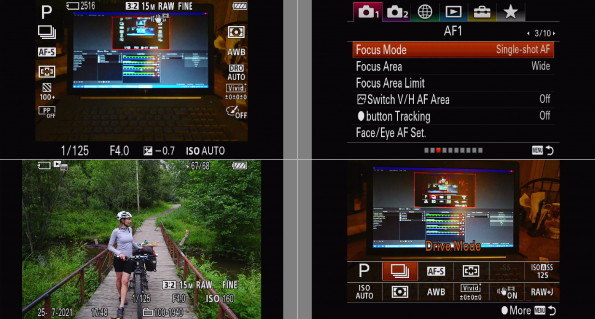
The camera menus will be extremely familiar for any Sony Alpha camera user—basically they are exactly the same in all Sony cameras of that era. Although for newcomers these menus and user interface as a whole may appear irritating, especially given the lack of touch screen.
Many features were borrowed from recent Sony Alpha cameras, like Eye AF, super-clever Auto ISO, tons of focus modes and zones etc. (A good part of them aren’t relevant with F12 eq. aperture though.) There is a lot of potential for studying, really! I remember how it took several hours to set up my first Sony camera for the first time back in 2018.

Unlike Alpha cameras, there’s not many physical buttons, and no dials, so every adjustment is very time consuming, as it requires a dozen button presses. In my experience, this camera is set up only once, and later there’s no need to dig into menus at all, except for initiating the wireless image transfer to a smartphone. In my case, stills and video recording are assigned to different physical buttons, so there’s no need to cycle between shooting modes. BTW, after you stopped video recording, the camera becomes totally irresponsive for about 5-10 seconds, which is really frustrating in some cases.
The battery is super-tiny here, and for any noticeable amount of video shooting you’ll probably need the spares. For stills shooting with very brief video clips, the battery is good for a single day (about 250 photos), and it’s easily recharged in the night from the power bank. (Normally the battery is charged in-camera via MicroUSB cable, plus external chargers are available as well.)
There are many optional addons for this camera, both from Sony and third-party manufacturers: spare protection glass, various filter adapters, cages, handles and so on.
Conclusion
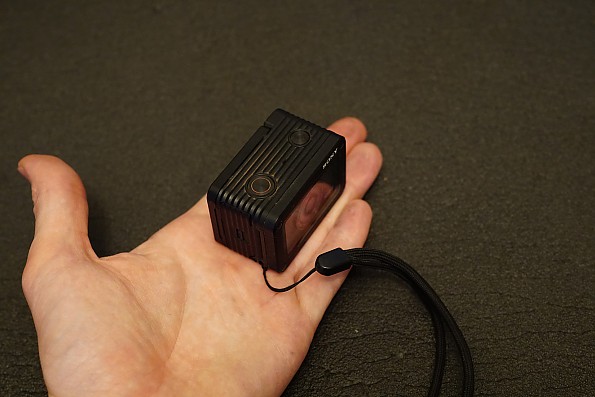
Overall, this is a great camera technically, especially for already established Sony users. But its scope of application is quite limited, and many people simply don’t need this camera, or it will appear too inconvenient in operation. Still, it proved itself as a great tool for landscape shooting in my paddling trips, and probably no other camera could substitute it. The closest competitor is the 1-inch Insta 360 One R, but it’s not a Sony, and for already established Sony users (like myself) that would be a definite drawback—say, the necessity to purchase different RAW processing software.
That said, Sony RX0II cannot be your single camera, but it delivers great results in select very difficult scenarios.
For those interested in this camera at reduced price, there's still possible to find the first version of RX0, with same hardware, but weaker video capabilities (up to FullHD). The photos from both cameras should be generally the same.
Background
I'm an experienced photographer. I've been using this camera mostly in packrafting trips, for three months in a row, 2000 photos taken already.
Source: bought it new
Price Paid: 550 USD
Your Review
Where to Buy
You May Like
Specs
| Price |
Current Retail: $698.00 |
| Sensor |
1.0-type (13.2mm x 8.8mm) Exmor RS CMOS sensor, aspect ratio 3:2 |
| Number of Pixels |
Approx. 15.3 Megapixels |
| Weatherproof |
Yes (IPX8 equivalent) |



